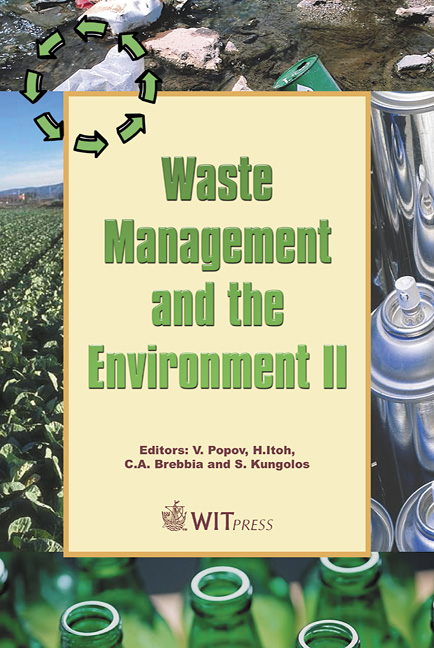Current Meat-related Waste Disposal Practices Of Free State Red-meat Abattoirs, South Africa
Price
Free (open access)
Transaction
Volume
78
Pages
7
Published
2004
Size
229 kb
Paper DOI
10.2495/WM040641
Copyright
WIT Press
Author(s)
H. A. Roberts & L. de Jager
Abstract
Increased amounts of waste are generated all over the world. Abattoirs are one of the industries that contribute to the problem of possible food-borne diseases and potential health hazards associated with food, especially meat. Arendse and Godfrey [1] quoted the statistics released by the Department of Environmental Affairs and Tourism (DEAT) stating that South Africa generates more than 42 million cubic metres of solid waste per annum of which 5 million cubic metres is hazardous waste. Waste generated by red-meat abattoirs includes condemned organs, carcasses, blood, hides, paunch content and carcass trimmings. Current economic conditions force under-privileged communities to seek any possible food source and some of the sites frequented are landfill sites/sources, dumping grounds and disposal sites used by abattoirs [2]. Condemned products and carcasses, unsuitable for human consumption, are eaten by \“scavengers” or persons living off refuse sites, and could cause a significant health problem leading to possible disease and death if consumed. Keywords: red-meat abattoirs, waste management, abattoirs, condemned products, waste disposal. 1 Introduction A variety of acts and legislation exist in South Africa. Examples include the Environmental Management Act (Act No. 107 of 1998) (NEMA), the Constitution of the Republic of South Africa (Act 108 of 1996), the Bill of Rights, the Abattoir Hygiene Act [3], regulations framed there-under and the
Keywords
red-meat abattoirs, waste management, abattoirs, condemned products, waste disposal.





